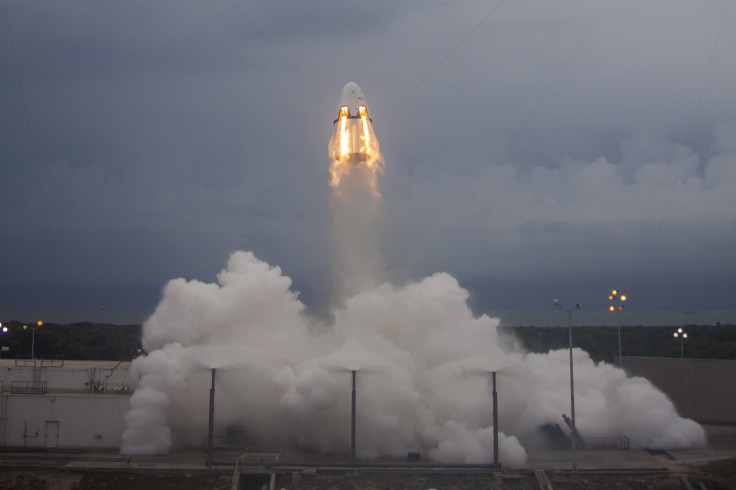SpaceX Pad Abort Test: Next-Gen Crew Dragon Spacecraft Demonstrates Astronaut Escape System

SpaceX successfully performed the first test flight of its next-generation Crew Dragon spacecraft Wednesday, which demonstrated a new abort system deemed critical in preparing the spacecraft for its first human missions in 2017. The successful test proved Crew Dragon’s ability to carry astronauts to safety if any life-threatening situation occurs on the launch pad.
Powered by eight engines, the Crew Dragon lifted off at 9 a.m. EDT from a specially built platform at Cape Canaveral Air Force Station’s Space Launch Complex 40 in Florida. The engines, each of which were producing about 15,000 pounds of thrust, lifted the spacecraft out over the Atlantic Ocean, before discarding its trunk, and then parachuting safely into the ocean, according to NASA.
“This is a critical step toward ensuring crew safety for government and commercial endeavors in low-Earth orbit,” Kathy Lueders, manager of NASA’s Commercial Crew Program, said in a statement.

NASA said that the flight test is a vital milestone for the future piloted spacecraft as it successfully demoed an escape system, which can quickly and safely take crew members away from their rocket. The latest data from the test flight can also be used to refine the spacecraft’s design to ensure crew safety throughout all phases of a mission.

“The engines are integrated directly into the sides of the vehicle rather than carried on top of the vehicle as with previous launch abort systems. This configuration provides astronauts escape capability from the launch pad all the way to orbit and allows the spacecraft to use the same thrusters to land propulsively on land at the end of a mission,” SpaceX said on its website.
SpaceX is also planning an in-flight abort test for later this year, followed by a crewed flight test in early 2017.
© Copyright IBTimes 2024. All rights reserved.






















